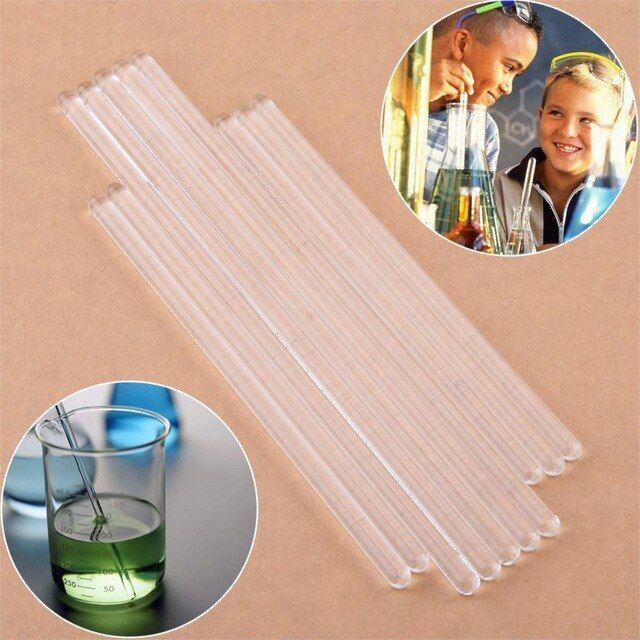- What it is used for
- What is a stirring rod, use of the Stirring Rod
- Handling and care
- Overview of a Stirring Rod
- Uses of a Stirring Rod
- Design and Construction of a Stirring Rod
- Different Variations of Stirring Rods
- Metal rods
- Simple Stirring Rods and Their Uses
- Stirring Rods With Battery Powered Motors
- Air Stirring Rods
- Stackable Stirring Rods
- Explosive Resistant Stirring Rods
- Variety
- Mixing rod
- Use of the stirring rod Widely used to stir
- Stirring rod uses in laboratory
- Laboratory materials
- Advantages of stirring rods
¿What is a stirring rod?, a glass stirring rod, glass rod, stirring rod or stir rod is a common piece of laboratory equipment used to mix or stir liquids and chemicals. These bars are thicker than a typical straw, have rounded ends and are made of a special type of laboratory glass called borosilicate.
This glass it is less affected by thermal stress and has an expansion point thermal very low, so it is less affected by heat than metals.
Stirring rods are mainly used in science laboratories for chemistry or biology experiments. The stirring rods are important because it agitates a solution, also known as stirring, makes
let the reaction happen faster.
The rods are also used to spread liquid substances on a solid surface. Be a metal bar is preferable because glass is not a good conductor of heat and metal is. The metal has free electrons. Therefore, in the metals, conduction takes place due to atomic vibration and the derivative of the free electrons. Glass, on the other hand, being non-metallic, does not it has free electrons.
When the glass is heated, its atoms absorb thermal energy and vibrate in higher amplitudes, passing thermal energy to other molecules. As as a result, it is a bad conductor, which makes it better for working with liquids heat. It has no free electrons. When the glass is heated, its atoms they absorb thermal energy and vibrate at higher amplitudes, passing energy thermal to other molecules.
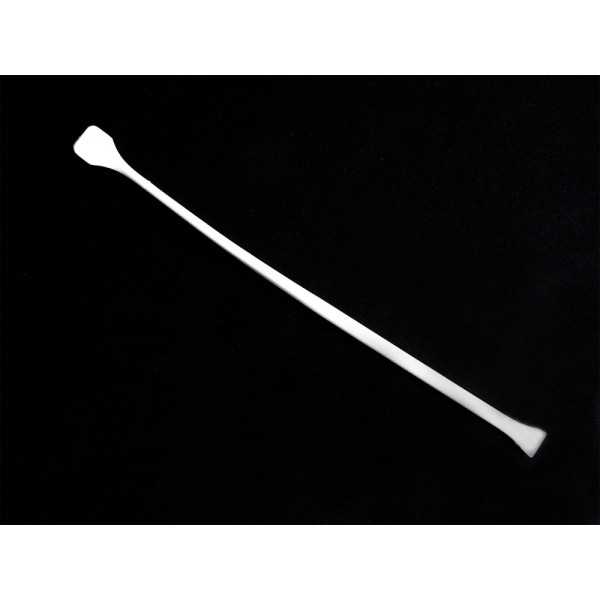

What it is used for
As as a result, it is a bad conductor, which makes it better for working with liquids heat. As a result, he is a bad driver, which makes him better for work with hot liquids.
What is a stirring rod, use of the Stirring Rod
Function the main task of the stirring rod is to stir the solutions by hand. Without however, stirring rods have other uses in the laboratory, such as help to decant the liquid from the containers, break the emulsions and induce crystallization. Stirring rods are used for decanting or pouring liquids slowly.
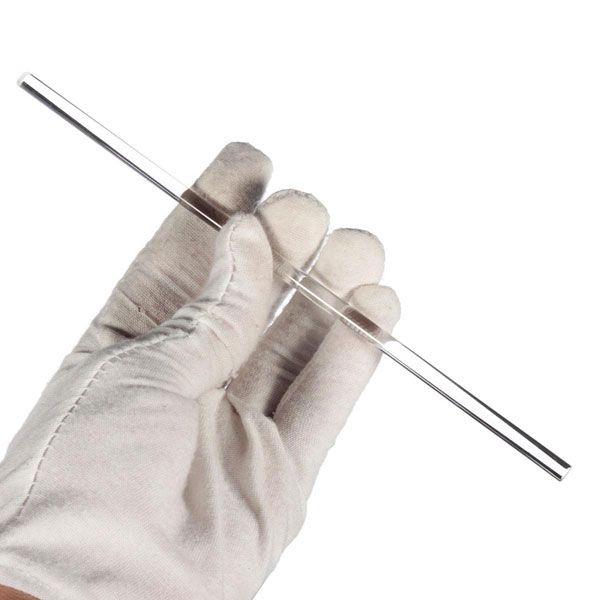

Handling and care
Dumping slow is essential when working with hazardous chemicals that they can react too quickly. The use of the stirring rod for decanting the liquid makes it easier to keep a precipitate at the bottom of the beaker, as the liquid is poured more slowly, which reduces the chances of stirring the solid.
Overview of a Stirring Rod
A stirring rod is a tool used to mix together liquids and solid materials in order to combine them into a uniform mixture. It is commonly used in laboratories and other scientific applications, but can also be used in cooking and other household tasks. The stirring rod has been around for centuries and has seen a lot of improvements in its design over the years. It is a simple but effective tool that can make a huge difference in the outcome of a mixture.
Uses of a Stirring Rod
A stirring rod can be used in a variety of ways. In the laboratory, they are used to mix chemicals or other substances together. This can help to dissolve substances, create a uniform blend, or react quickly. In cooking, stirring rods are often used to mix sauces, ingredients, and other mixtures. They are also used to help combine ingredients that must be mixed together at the same time.
Design and Construction of a Stirring Rod
Stirring rods are typically made of metal, glass, or plastic. The design and construction of the stirring rod depends on its intended use. In laboratories, a round-shaped and hollow stirring rod is often used, while plastic stirring rods might be used for cooking. The stirring rod might also have a handle to make it easier to hold and to control the motion. The rod should be long enough so that it can easily reach the bottom of the container and can move the material around.
Different Variations of Stirring Rods
There are a variety of different types of stirring rods available. Some of the more common varieties include stainless steel, glass, and plastic stirring rods. Each has its own advantages and disadvantages. For example, stainless steel stirring rods are the most durable of the bunch, but can be harder to clean. Glass stirring rods can be easier to clean and can be used to blend together delicate substances. Plastic stirring rods are lightweight and can be less expensive than metal or glass, but may not be suitable for certain tasks.
It is a glass rod very resistant to corrosion. It can withstand most acids and alkalis. It has a great duration and can work at high temperatures of 1200 °C for a long time. Thanks to these features,
the stirring rod is widely used in laboratories and industries.
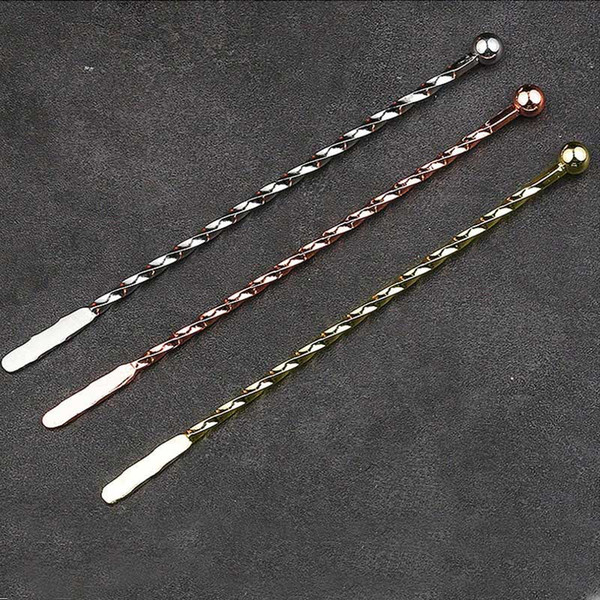

Metal rods
I agree with different diameters, the glass rod can be divided into laboratory used stirring and sight glass rod. The rod of glass is resistant to corrosion. It can resist most acids and alkalis. It has a long life and can work at high temperatures of 1200 °C for a long time. Thanks to these features, the rod stirring is widely used in laboratories and industries. In the laboratory, you can use stirred glass to speed up the mixing of chemicals and liquids.
It can also be used to do some experiments. In the industry, the glass rods are used to produce gauge glass.
Simple Stirring Rods and Their Uses
Simple stirring rods are composed of either glass or plastic and are usually flat or round rods. They are commonly used in combination with magnetic stir bars and are ideal for a range of laboratory processes requiring stirring, such as distillation, filtering, and more. Simple stirring rods also provide a more stable platform for magnetic stir bars and are often less expensive and easier to use than other stirring rods.
Stirring Rods With Battery Powered Motors
For processes that require high-powered stirring, battery-powered stirring rods with motors are often used. These rods are often made from stainless steel or plastic, depending on the application and are usually equipped with a motor and a speed control. This type of stirring rod is ideal for processes that require constant stirring, such as maintaining temperature balance while heating or cooling, and mixing high viscosity liquids.
Air Stirring Rods
Air stirring rods are designed to be used in both laboratory and industrial settings. They consist of a nozzle, blower, and a motor, and are typically made from stainless steel or plastic. They are usually equipped with speed control and a choice of digital and manual control, making them ideal for large batches of liquid and highly viscous liquids.
Stackable Stirring Rods
Stackable stirring rods are composed of different sizes of stirring rods that can be stacked and connected to one another for various laboratory procedures. These rods are useful for processes that require different levels of sturdiness, such as stirring small batches of liquids or larger batches that require bigger rods. Stackable stirring rods can also be used for stirring samples with heavy or awkward-shaped objects.
Explosive Resistant Stirring Rods
Explosive resistant stirring rods, also known as explosion-proof stirring rods, are designed to resist any kind of explosive reactions. They are typically made of stainless steel or plastic, and are usually equipped with additional features, such as a spark probe or an igniter, that can detect and extinguish sparks. These rods are used in laboratories where potentially volatile substances are handled, such as pharmaceuticals, explosives, and hazardous materials.
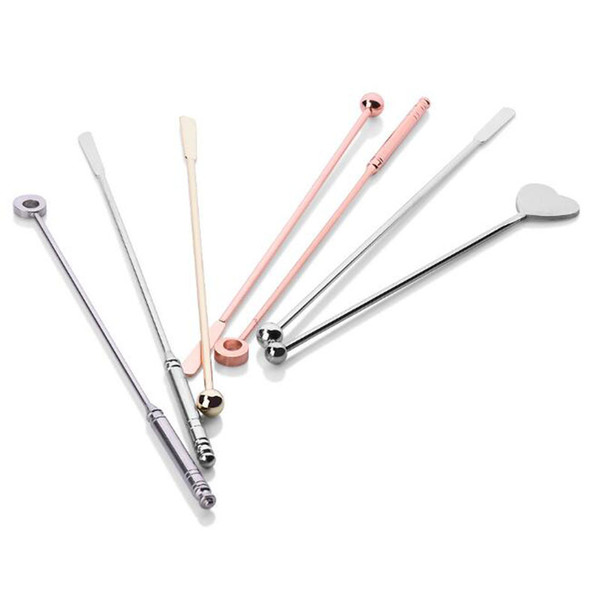

Variety
The diameter the outer diameter is 6 mm. The rods EF12598D to EF12598G are made of solid PTFE with flat ends. The outer diameter is 8 mm. Both types can be use at temperatures up to 280ºC. A key feature in the rods of stirring is the inert PTFE material is not scratched that's why we should choose rods with a steel core if you want to remodel.
The stirring rods with steel core are ideal when they require additional rigidity and have a rounded end, while the solid plastic rods have a tapered end. Borosilicate glass stirring rods have low thermal expansion values and have flat ends. Function of the Stirring Rod.
The mechanical stirring rod provides effective and economical solutions for agitating chemicals and liquids in suspension of low and medium thicknesses. Both models are very easy to use, do not require tools and include a cable designed to keep away from moving parts.
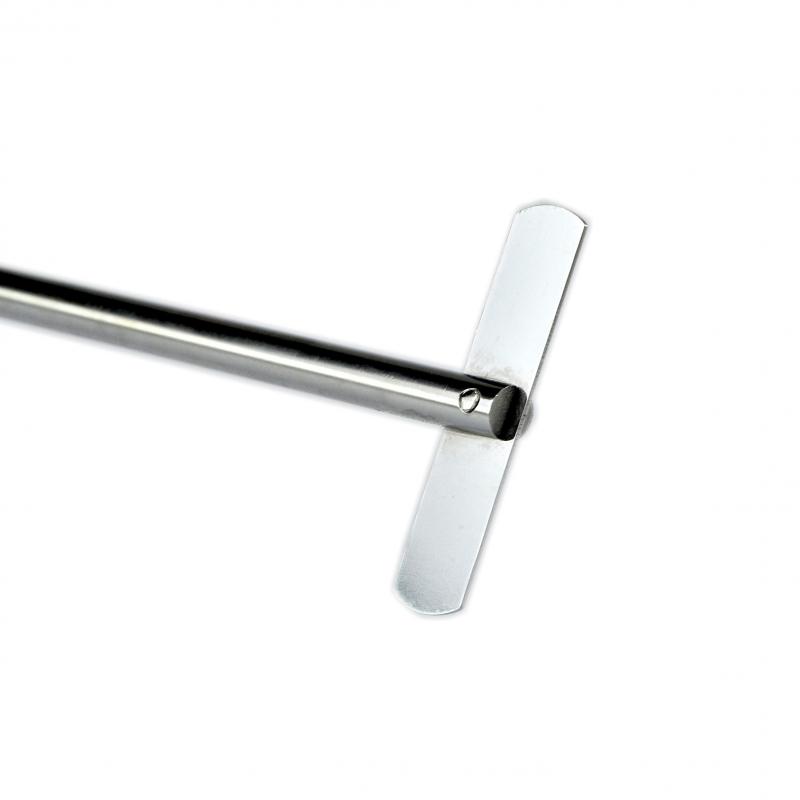

Mixing rod
In addition, the powerful engine and dynamic allows for reliable, lightweight operation that can run continuous for more than 8 hours. The soft start prevents the overflow of liquid from the container and the speed can be controlled precisely and responsive with two easy-to-use controls.
Both mixers are also equipped with two stirring rods of different sizes (large and small) to allow the use of different containers and liquids.
Use of the stirring rod Widely used to stir
For to accelerate the mixing of chemicals and liquids, rods are used glass for stirring.
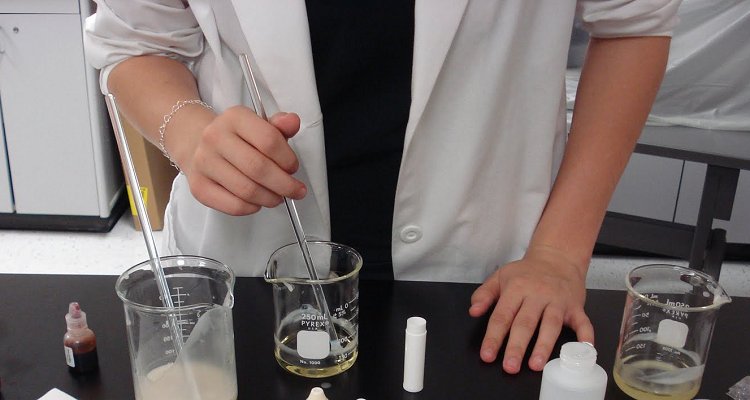

Stirring rod uses in laboratory
- Widely used for the electrification experiment
- Rub the skin and silk can easily estimate the positive and negative electricity.
- It is used for spread the liquid evenly somewhere
- To avoid a fierce reaction, especially a dangerous chemical reaction, the rods agitators are used to pour the liquid slowly.
- Widely used to produce peephole
- Some rods large diameter glass are used to produce peephole.
- They are also used to pour liquids and prevent spills. When a glass rod is placed against the pouring rim of a beaker, it causes the liquid inside to flow along the rod into the receiving container instead of splashing over the rim. The surface tension of water can cause it to behave irregularly when poured.
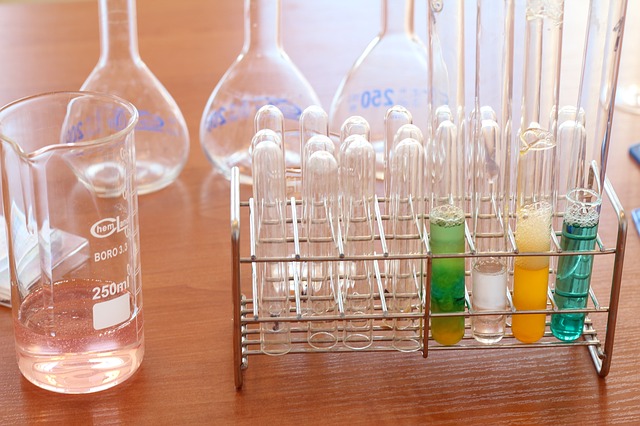

Laboratory materials
In some cases, the liquid may "stick" to the pouring vessel and, in instead of flowing in a clean stream, it can flow down the side of the glass and splash. The use of a glass rod or other object reduces this potential by allowing the water to adhere to the rod.
Advantages of stirring rods
Resistance corrosion resistance
The disc of especially quartz glass can resist acid and alkali. The quartz is not they react with any acid, except hydrofluoric acid.
Hardness strong
Our hardness glass rod can reach the requirements of laboratory and industry.
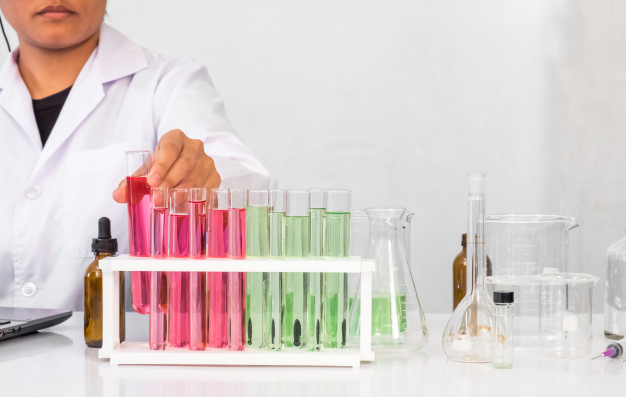

How to handle laboratory materials
Of high working temperature
Rod soda-lime glass can work at 400°C temperature and the best rod quartz glass can work in 1200°C temperature continuously.
Small thermal expansion
Our stirring rods have a small thermal expansion and will not break at high temperatures.
Tolerance strict compliance


Stirring rod for mixtures
For what general, we can control the tolerance as small as ±0.1 mm. If you need a lower tolerance, we can also produce stirring rods of accuracy. The tolerance can be less than 0.05 mm.
Stirring rod package and transportation. The stirring rods for safety are transported and packed with bubble wrap and then with cardboard and wooden box, in this way the possible damages that they may suffer when being transported are avoided.
References

